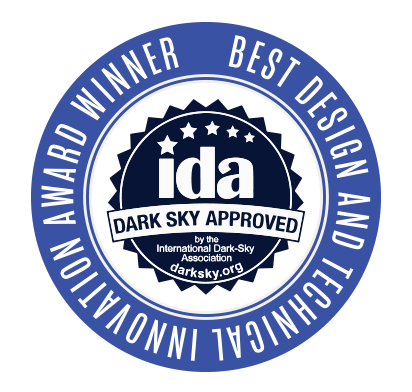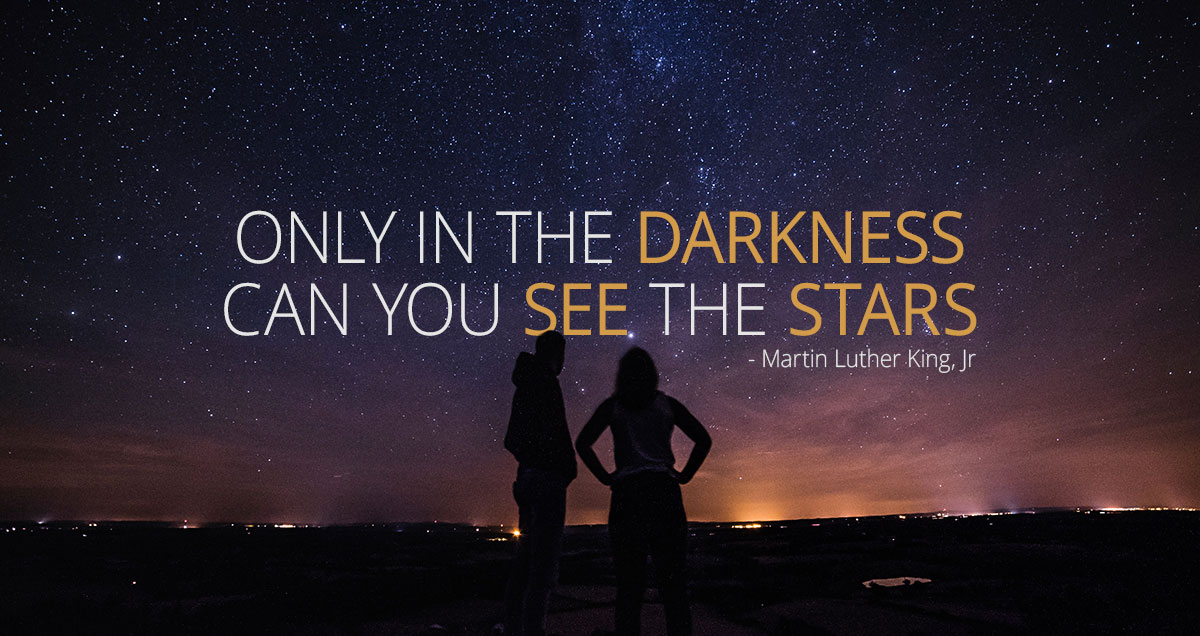
WHAT IS LIGHT POLLUTION?
Light pollution is the introduction of artificial light into the night sky. Street lights are the primary cause of light pollution and sky glow, obscuring the stars and creating perpetual twilight. Light pollution contributes to light trespass issues on public and private properties. Today, 80% of the US population cannot see the Milky Way. Blue wavelengths of light emitted by LED fixtures is a leading contributing factor of light pollution and sky glow.
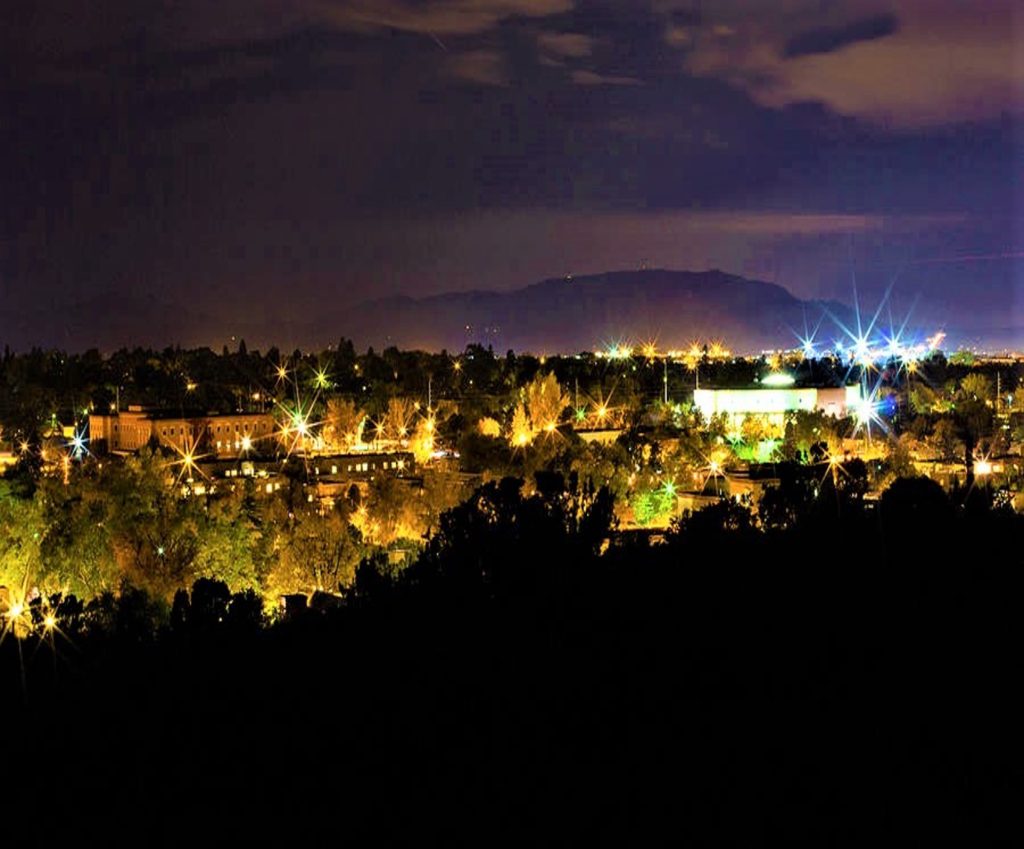
High Pressure Sodium Street Lights
- High pressure sodium (HPS) street lights emit a 2200 kelvin diffused amber light
- Generate minimal blue light
- High pressure sodium fixtures are the most common street lights in use today
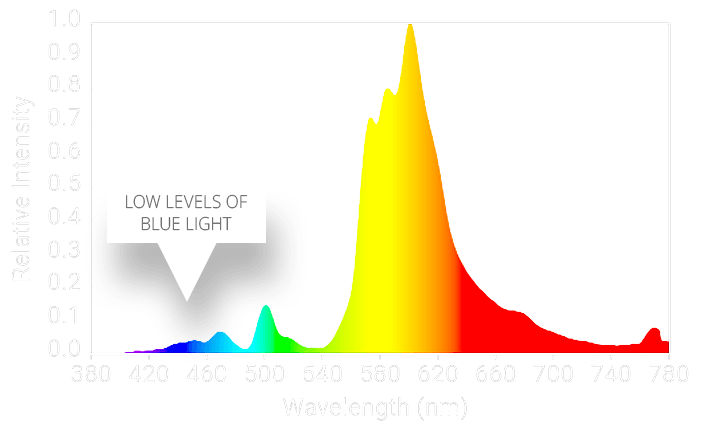

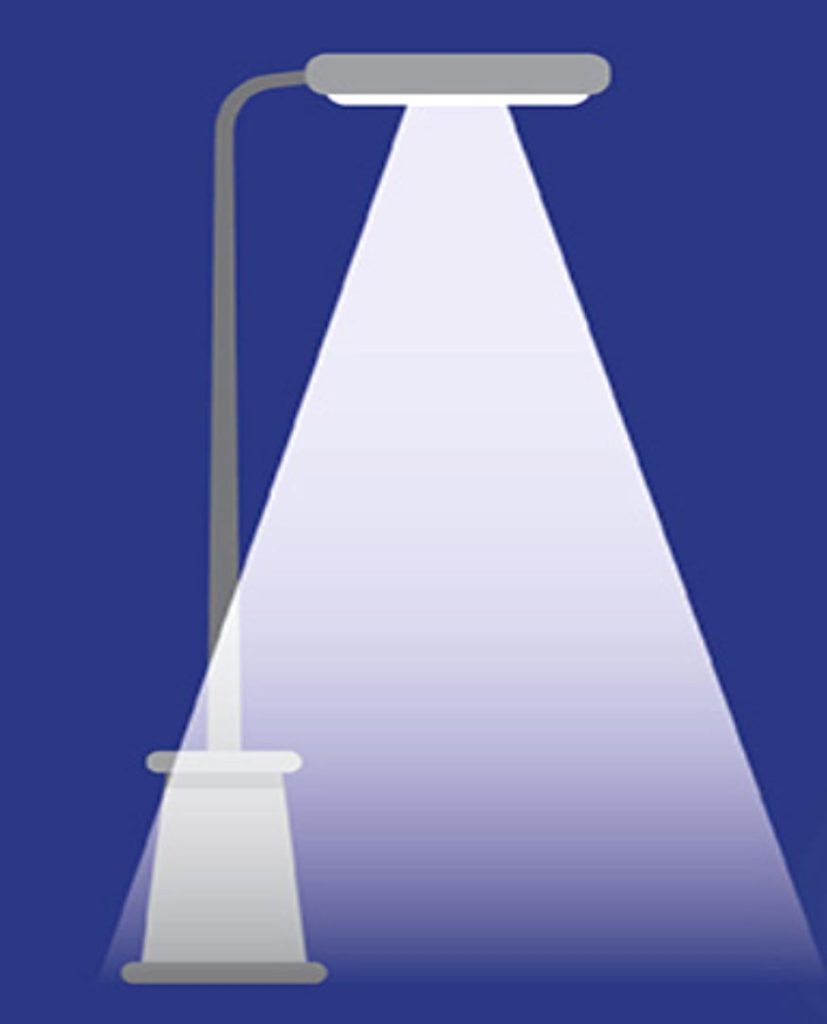
3000 Kelvin LED Street Lights
- LED street lights have a more intense and directly focused beam angle, resulting in intense glare and light trespass issues
- White LEDs are actually blue LEDs with a phosphor coating that convert the blue light into white through a process called fluorescence
- Blue light radiates from the LED, significantly contributing to light pollution and sky glow
LEDs vs The Night Sky
- Blue light is scattered in all directions by the atmosphere
- The blue light is partially scattered back toward the ground, producing a diffuse glow that can be seen from miles away
- The resultant sky glow blocks the natural light and beauty of the night sky
- It takes more than simply changing the LED color temperature to 2700 or 3000 kelvin to be Dark Sky compliant as these LED’s produce significant amounts of harmful blue light
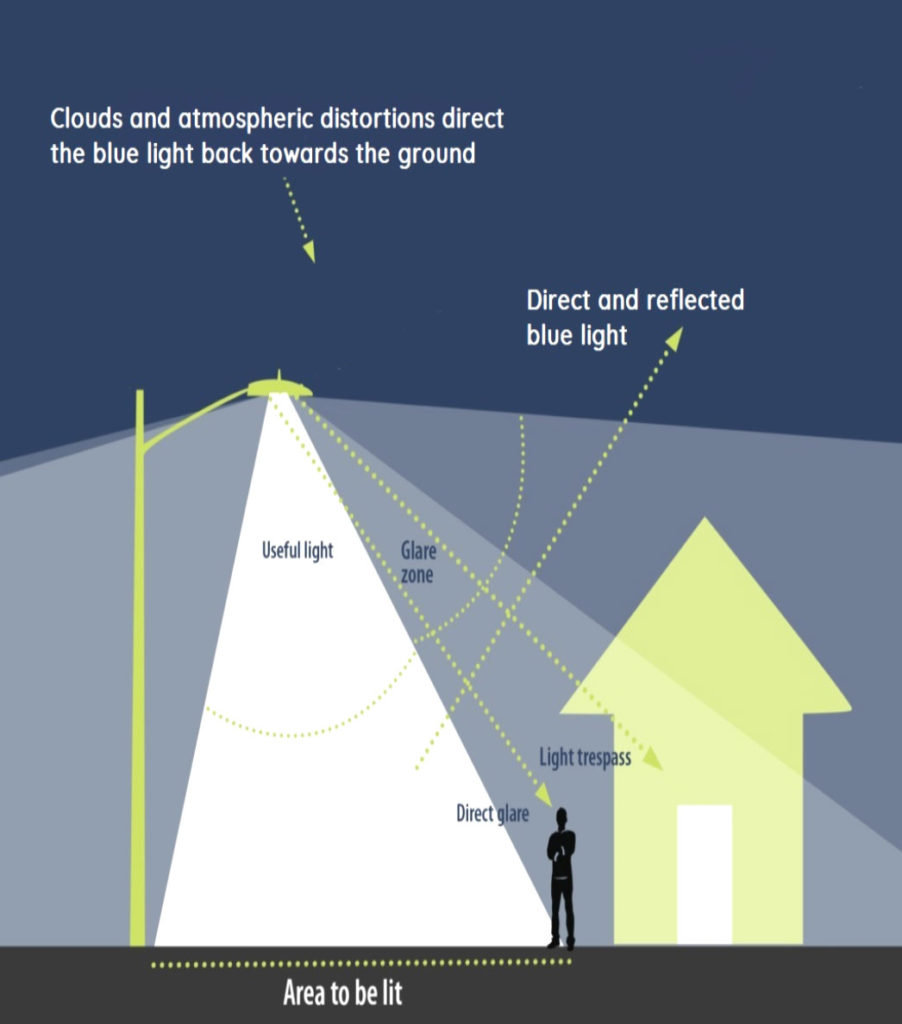

IDA Statement on Blue Light
LEDs
With the continued advances in LED technology, the IDA is concerned about the potential negative effects of blue rich light on the night sky, including fixtures with shielding and 3000 kelvin LEDs
New lighting requirements
Because of this, the IDA is expected to soon reduce its color temperature recommendation to 2,700K or lower
IDA recommendations
The IDA promotes environmentally responsible outdoor lighting projects and encourages the adoption of new technologies that utilize the lowest possible kelvin temperature LED’s that will reduce and eliminate blue light emissions into the night sky
Are they really Dark Sky rated?
Although all three of these fixtures have an IDA stamp, none incorporate the required full shielding necessary for IDA compliance and will generate significant amounts of light pollution, light trespass and glare. All three 3000 kelvin fixtures radiate significant levels of blue light and will increase light pollution and sky glow.

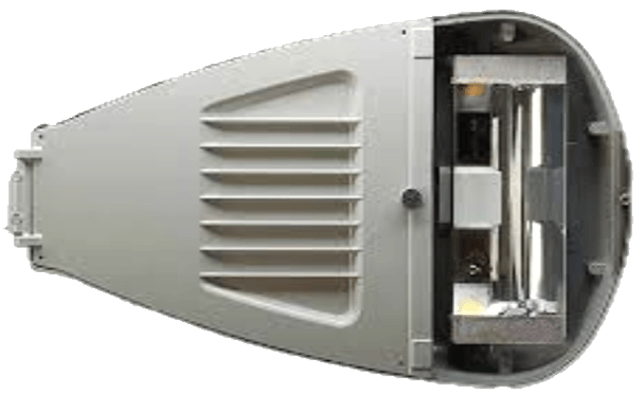
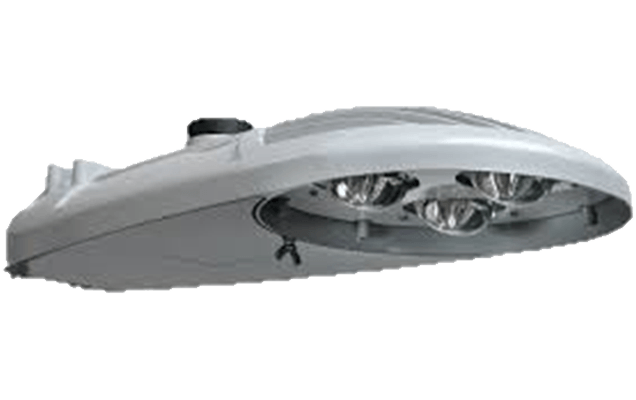
Dark Sky rated LED fixtures
- Advanced Dark Sky Compliant LED street lights utilize Phosphor Converted Amber (PCA) LED’s at the same 2200 kelvin temperature as HPS street lights
- Negligible levels of blue light, less than HPS street lights
- Fully shielded fixtures that completely enclose the LED’s, eliminating glare
- Have internally mounted and adjustable house side light shields on all fixtures that will 100% eliminate light trespass to the light pole/curb

Crossroads LED 2200 kelvin Astrophile fixtures spectral power distribution (SPD) measurement
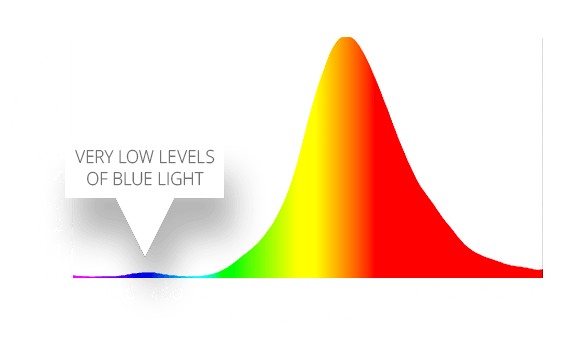
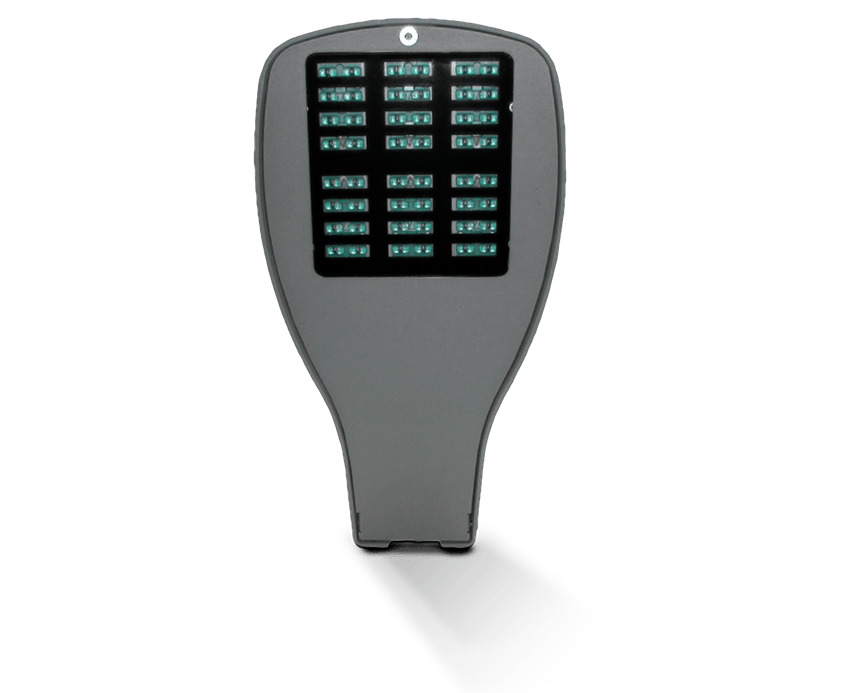
Crossroads LED 1700 kelvin Astrophile fixtures spectral power distribution (SPD) measurement
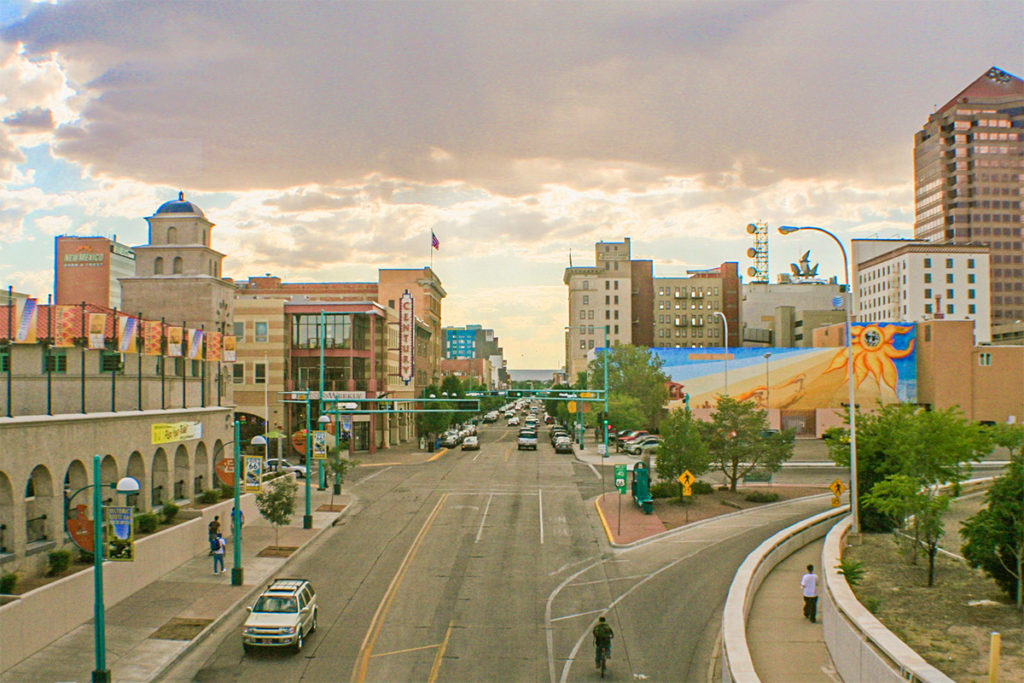
Case Study
Albuquerque LED Street Light Conversion Program
In August of 2017, City officials announce a $20 million partnership with an energy service company to convert 20,000 HPS streetlights to LED technology. The City anticipated significant savings in electricity and maintenance over the LED bulb’s estimated 18 year lifespan.
The program required the use of 3000 kelvin Dark Sky compliant LED fixtures to decrease light pollution and preserve the City of Albuquerque’s night skies. In December 2018, City officials announced that all 20,000 street lights have been replaced with LED technology.

Replacing HPS street lights with 3000 kelvin LEDs will considerably increase both a Cities and the surrounding communities’ light pollution and sky glow by at least 100%.
Cities should consider new ordinances and specifications that require LED street lights to be at the lowest possible kelvin temperature and meet Dark Sky specific performance standards.
Do not rely on internally generated test data provided by lighting manufacturers or their distributors. Demand independent third party testing from an accredited laboratory for all LED street lights. At a minimum, the test data should include LM-79, LM-80, ISTMT and TM21 test reports.
